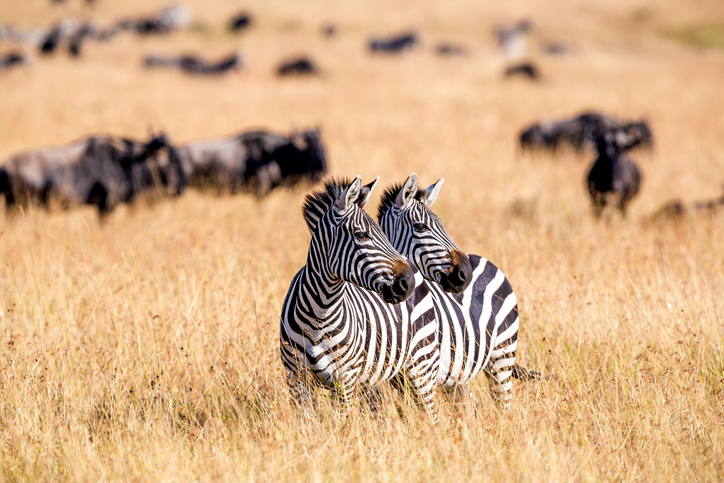Biodiversity loss presents a major risk of destabilizing the global economy. This is the conclusion of the Network for Greening the Financial System (NGFS), which recently developed a conceptual framework for analyzing and preventing this risk. However, the scenarios on which this work is based have limitations that we intend to overcome, by including ecosystem services in the assessment and opting for an open science approach.
In recent years, there has been a growing awareness that biodiversity loss could undermine the stability of prices and financial systems. Case studies in Brazil, the Netherlands, France and Malaysia have revealed that significant portions of the assets held by banks (between 36% and 54% depending on the study) are highly dependent on the stability of at least one ecosystem service. These studies also highlighted the fact that significant proportions of financial assets were exerting considerable pressure on biodiversity. These pressures are such that there is a risk of loss of financial value, whether as a result of policies, changes in the behavior of responsible citizens, or competition from innovative companies aiming to reduce pressures on nature.
Consequently, it is vital to take swift action by exploring innovative approaches, while improving biodiversity data collection, in order to better understand the economic challenges and resulting financial repercussions. Against this backdrop, in September the Network for Greening the Financial System (NGFS) published its Conceptual Framework for Nature-related Financial Risks. Comprising of central banks and financial regulators, the NGFS aims to improve the integration of climate change and environmental risks into the forecasting models of central banks and regulatory authorities.
Scenarios for assessing nature-related financial risks
The Framework seeks to create a common science-based understanding of these nature-related financial risks and a shared language among NGFS members. Aware of the unprecedented nature of these new perils in human history, operators quickly realized that observing past financial market experiences or simply extrapolating current trends would not suffice. This is why the NGFS advocates risk assessment based on different scenarios of possible futures. These scenarios are used to establish the famous “stress-tests” designed to assess the resilience of financial systems in the face of natural degradation, or measures designed to prevent the destabilization of life on the planet.
Various hypotheses of possible changes in biodiversity are thus formulated, in order to project how they could affect financial systems (physical risk scenarios). Other scenarios focus on the changes needed to achieve the objectives of the new Kunming-Montreal Global Biodiversity Framework (GBF), signed in December 2022 (transition risk scenarios). Under this pact, signatory countries to the United Nations Convention on Biological Diversity will have to draw up new national trajectories for sustainable development and the protection of living things. These trajectories should aim to transform multiple economic sectors in order to halt biodiversity loss by 2030 and begin its recovery by 2050.
Some significant limitations
However, global quantitative scenarios for the world’s biodiversity have a number of limitations.
For example, there are no physical risk scenarios to project the non-linear degradation of biodiversity and the ecosystem services it provides, according to different socio-economic development trajectories.1 Humanity’s exerted pressures on ecosystems can lead to irreversible change. And yet, the disappearance of these pressures does not systematically lead to the complete restoration of the system, but can sometimes give rise to the establishment of an alternative ecosystem. The few attempts we have identified attempting to measure the consequences of transition policies on the services provided by nature remain opaque. They also fail to take into account the possibility of tipping points being exceeded, and the resulting ecosystem collapse.
Furthermore, the scenarios generally only deal with the transition risks. They do not take into account possible feedbacks linked to the changes induced by the scenarios. For example, even if a scenario predicts drastic sobriety changes or massive biodiversity degradation, the economic growth of countries is not impacted accordingly. In addition, the GBF targets are not defined at regional or country level, and the modelling of the effort required to bring about the transition of economies differs considerably from one scenario to another, which has a considerable influence on the results. For example, in some studies, the target of protecting 30% of land surfaces will be applied differently from one country to another, with some safeguarding more biodiversity-rich areas and others including desert zones in their share of protected areas. Finally, some crucial aspects of biodiversity, such as genetic and soil diversity are often neglected in certain models, that are limited to assessing the abundance of mammals and birds.
Avenues for immediate action
In view of these limitations, the NGFS has just published recommendations for action to be taken before science has produced global models for the evolution of biodiversity and ecosystem services.
To this end, we advise all stakeholders to increase the number of approaches to collecting, openly publishing and distributing biodiversity data, including unconventional approaches (data crowdsourcing, satellite data, household and business surveys, etc.), to feed future models while guaranteeing the reproducibility of analyses.
The absence of projections on the degradation of ecosystem services and the materialization of physical risks for the financial sector should not be a reason to adopt a wait-and-see attitude. The Environmental Sustainability Gap Analysis Framework (ESGAP) can be used to develop short-term physical scenarios. It can help to determine whether or not countries are approaching a safe operating mode for the economy and, consequently, estimate the risk of reaching a tipping point.
When it comes to anticipating the financial risks of reducing pressures on biodiversity, recent work on analyzing transition risks for climate change can be adapted. This involves comparing economic sectors according to the pressures they exert on biodiversity, and taking into account the biome in which they occur. All these avenues of research are currently being explored by various research teams, and should produce useful new results for the financial community in the near future.
The complexity of the issues surrounding biodiversity demands immediate and innovative action from all stakeholders, both in terms of data collection and the development of financial risk scenarios. Given the urgency of the situation, it is imperative to multiply collaborative approaches and explore dynamic solutions in order to best apprehend the economic and financial challenges induced by the degradation of nature. Only concerted open science action, guided by a thorough understanding of risks, will enable us to achieve the ambitious targets of the Global Biodiversity Framework, thereby safeguarding the stability of financial systems and the future of our planet.
- Cuando la degradación de un ecosistema es mayor que la suma de las degradaciones de sus partes ↩︎







